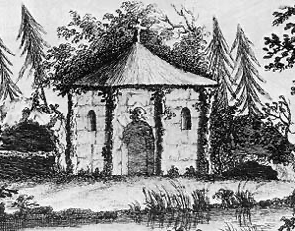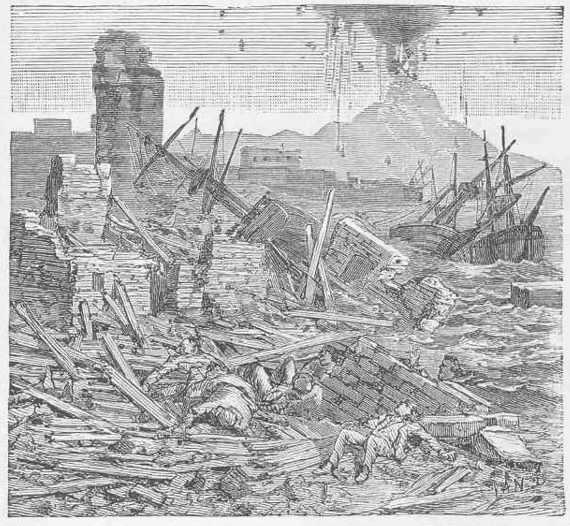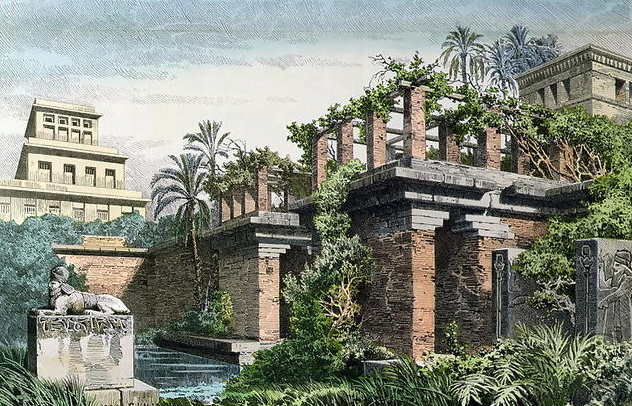
If you have been visiting Strange Ago for any length of time, you know that strange things have happened in the past. In fact, you probably feel that the strange things are what make history so interesting.
Here are twelve more weird facts from history. How many of these have you heard of?
1. Garden Hermit

In the 18th century, there was a peculiar trend known as “ornamental hermitage.” Wealthy landowners would hire people to live as hermits in purpose-built huts on their estates. The hermits were expected to dress in rags, not bathe, and be available for philosophical conversations with visitors.
2. Radium Use

In the early 1900s, radium was considered a miracle substance and was used in a wide range of products, including cosmetics, toothpaste, and even radioactive water. People believed it had health benefits, but later discovered that prolonged exposure to radium could lead to severe health issues, including cancer.
3. London Beer Flood

The London Beer Flood occurred in 1814 when a huge vat of beer ruptured at a brewery, causing approximately 1.5 million liters of beer to flood the streets. The beer wave swept through nearby houses and caused the collapse of a wall, resulting in the death of eight people.
4. Tiptoe Through the Tulips

In the 17th century, tulip mania swept through the Netherlands, causing the prices of tulip bulbs to skyrocket. At the peak of the craze, a single tulip bulb could be worth more than a house. However, the bubble eventually burst, resulting in a severe financial crisis known as the “Tulip Crash.”
5. Taos Hum

The Taos Hum is a mysterious low-frequency sound that has been reported by residents of Taos, New Mexico, since the early 1990s. The source of the hum remains unknown, and it has sparked various theories ranging from tectonic plate movements to physiological causes.
6. No Summer

The “Year Without a Summer” occurred in 1816 due to the aftermath of a massive volcanic eruption. The eruption of Mount Tambora in Indonesia caused a significant global cooling effect, resulting in abnormally cold temperatures and widespread crop failures. Snowfall was reported in June in parts of the Northern Hemisphere.
7. Niagara Falls

In 1901, Annie Edson Taylor, a 63-year-old schoolteacher, became the first person to go over Niagara Falls in a barrel and survive. She hoped to gain financial security from the stunt but ended up with limited success. Despite her daring feat, she lived her remaining years in relative obscurity.
8. Microwave
The “Invention of the Microwave Oven” came about accidentally. In 1945, Percy Spencer, a self-taught engineer, was working on a radar-related project when he noticed that a candy bar in his pocket had melted due to the microwaves emitted by the equipment. This observation led to the development of the first microwave oven.
9. Sweat Blood
The “Blood Sweating Disease,” also known as hematidrosis, is a rare medical condition where a person spontaneously sweats blood. Historical accounts of this phenomenon date back to ancient times, with reported cases during times of extreme stress or anxiety.
10. Earth Revolves Around the Sun

During the Renaissance period, “Heliocentrism,” the belief that the Earth revolves around the Sun, challenged the prevailing geocentric model. Astronomer Nicolaus Copernicus proposed this heliocentric theory in the 16th century, challenging the established view that the Earth was the center of the universe.
11. Green Kids
The “Green Children of Woolpit” were two children found in the village of Woolpit, England, in the 12th century. They had green-colored skin and spoke an unknown language. According to their accounts, they came from an underground world where everything was green. The origins of the children remain a mystery.
12. Hanging Gardens of Babylon

The “Hanging Gardens of Babylon” are considered one of the Seven Wonders of the Ancient World, yet their existence has been a subject of debate. While historical records and descriptions describe their magnificence, there is no concrete archaeological evidence to prove their actual location or construction.

